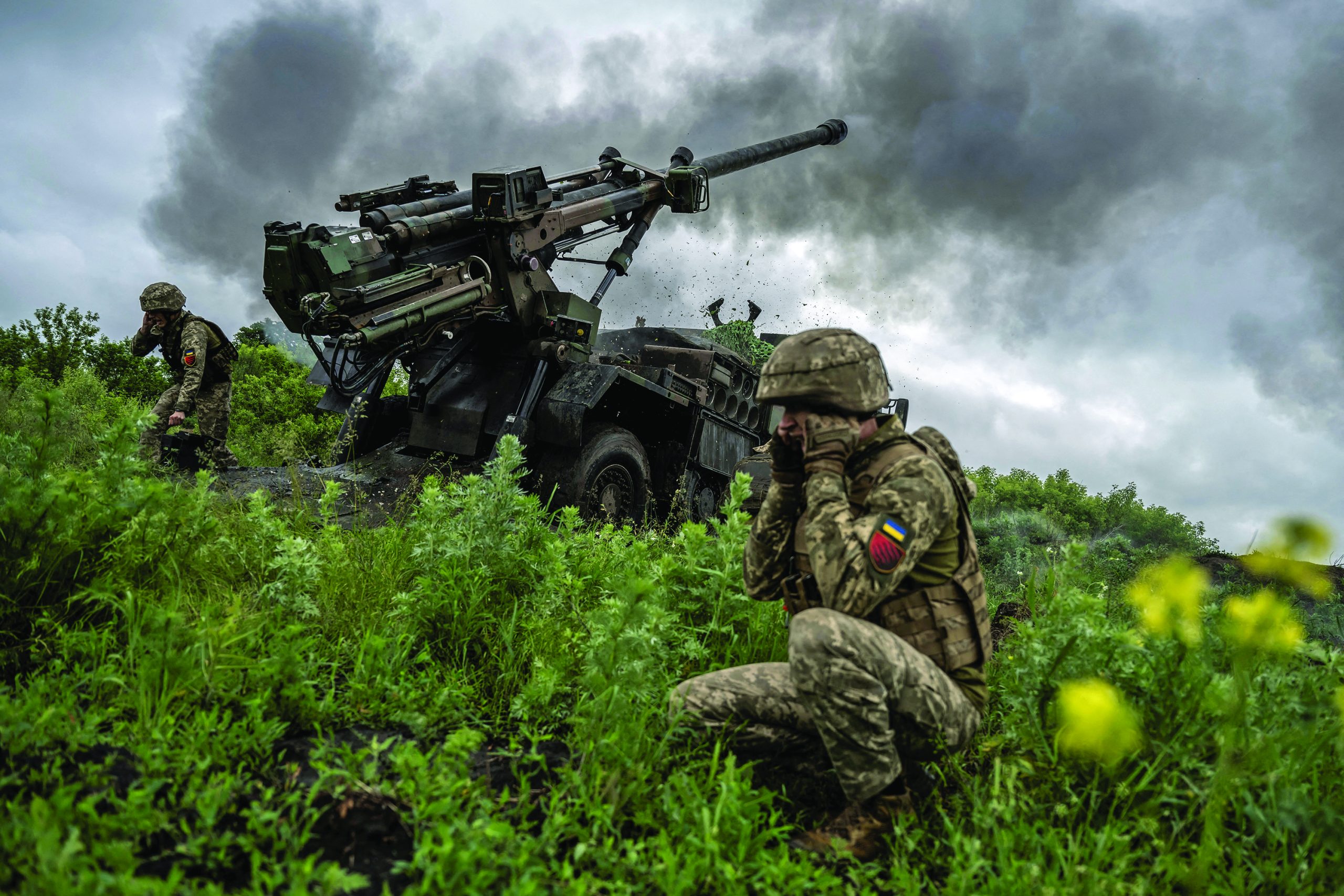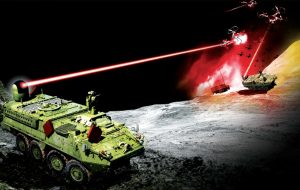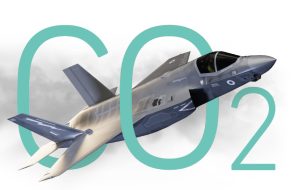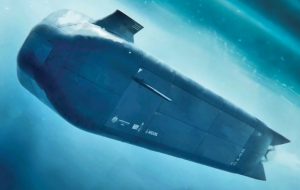Europeans are becoming increasingly convinced that the United States and Britain are seeking a phase contrary to the “Marshall Plan,” the economic project that the United States allocated to rebuilding Europe after World War II. In other words, they are sacrificing the rest of Europe in an attempt to limit the expected “civilizational decline” of the non-Anglo-Saxon Westen Europe. These policies became evident in 2016 when the British voted in favour of leaving the European Union.
This American tendency to disregard European interests has affected the usual military and security coordination between the United States and the European Union. For example, at the beginning of 2021, Charles Michel, President of the European Council, stated that the US withdrawal from Afghanistan reinforced the idea of “European Strategic Autonomy” among European countries.
This context was manifested in the Berlin Coalition Agreement of 2021, which stated, “We want more strategic autonomy for Europe. … Our goal is an independent European Union functioning as a strong player in a world characterized by uncertainty and systematic competition.”
The incident of Australia cancelling a contract to purchase 12 French submarines in favour of the United States was seen as a “stab in the back” and a “breach of trust,” according to French diplomats who expressed their anger and disappointment, not only with the cancellation of the deal but also with the manner in which it was handled by the US ally and its Anglo-Saxon partners (Australia and Britain).

EU leaders expressed their solidarity with France and indicated that the United States had lost trust in the NATO alliance, highlighting the concept of European Strategic Autonomy.
Other incidents have recently brought the concept of strategic autonomy to the forefront of European debate. For instance, the United States did not share information with its European partners confirming an imminent Russian invasion of Ukraine. This led to the resignation of French military intelligence chief General Eric Vidaud, as he was unable to timely warn the French administration due to the United States’ failure to share relevant information.
The Russian-Ukrainian war, the escalating confrontation between the United States and China, and their impact on Europe have encouraged the pursuit of European strategic autonomy in shaping security and economic interests, away from the current policies and orientations of the United States, from which Europe usually suffers the most.
In other words, some European countries, led by France, believe that the United States has turned its back on Europe, China is becoming more aggressive as a global power, and Russia under Putin is attacking independent European countries.
This geopolitical situation is not favourable for the European Union, which should act and behave militarily, politically, and economically independently from other players in international politics.
French President Emmanuel Macron expressed this sentiment on several occasions, most notably after his recent visit to China with European Commission President Ursula von der Leyen, where he stated, “Europe should not act as a follower of the United States, and it should not involve itself in crises that do not concern it,” clearly referring to the Taiwan crisis between China and the United States. Additionally, European Council President Charles Michel announced that EU leaders are inclined towards Macron’s approach regarding strategic autonomy from Washington. On the military level, strategic autonomy aims to achieve the reliable use of military force by the European Union, ensuring peace and security within and beyond its borders, even in remote areas. This includes the Union’s ability to respond to crises and conflicts within or adjacent to its territory, even when the United States is unable or unwilling to address these issues. With the increasing discussions and actions within Europe regarding strategic autonomy, Republican Senator Marco Rubio from Florida threatened to leave Europe to deal with the Ukrainian crisis on its own and focus on the Taiwan issue.
Meanwhile, Chinese Foreign Minister Wang Yi conducted a European tour from May 8 to 12, 2023, including Germany, France, and Norway, upon the invitation of his counterparts in the three countries. As a result of the visit, China expressed support for Europe’s strategic autonomy. Thus it is undoubtedly in China’s interest to draw Europe away from Washington. This study aims to analyze and shed light on the effects of the desired “European Strategic Autonomy” on military domains:
The impact of the desired “European Strategic Autonomy” on the military domains
Several studies emphasize the necessity of establishing European strategic autonomy on the military level based on the following principles:
1. Foreign policy based on alliances.
2. European industrial and technological base.
3. The ability to deploy military forces abroad.
4. Recognition among EU member states that they cannot defend themselves individually, and therefore each country must be a driving force for military and industrial cooperation with other Union countries.
In this context, the European Defence Agency highlighted three main challenges hindering effective European strategic autonomy within the European defence system:
1. Insufficient defence spending.
2. Deficiencies in the defence manufacturing sector.
3. Equipment shortfalls.
To overcome these challenges, the agency proposed a set of measures regarding equipment shortfalls, including:
1. Renewing military inventories.
2. Replacing outdated systems inherited from the Soviet era.
3. Enhancing air and missile defence systems.
4. Rapidly establishing a defence procurement facilitation team.
5. Proposing short-term coordination tools for joint defence procurement.
To strengthen European industrial capabilities in the defence sector, the agency proposes:
1. Establishing a comprehensive European defence investment program.
2. Developing detailed maps of current and required capabilities.
3. Ensuring access to critical raw materials for manufacturing.
4. Ensuring availability of necessary skills for manufacturing.
5. Making necessary changes in research and innovation to enhance synergy between the civilian and defence sectors.
6. Supporting biotechnology and industrial capabilities through strategic projects.
7. Increasing budgets for manufacturing and military mobility.
In recent years, the European military strategy has witnessed the establishment of new working tools, the most important of which were detailed in Al Jundi Journal’s issue of July 2023, including Permanent Structured Cooperation (PESCO), the European Defence Fund (EDF), the European Intervention Initiative (EII), the European Peace Facility (EFF), and the Strategic Compass (SC).
These tools have transformed the concept of European defence, which did not exist until the end of 2017, into a reality with its own instruments and mechanisms capable of impacting power balances and achieving strategic autonomy for Europe.
Therefore, in this study, we will shed light on the important achievements initiated in the military field in the context of the European Union’s journey towards achieving the desired strategic autonomy. Some of these notable achievements include:
1 Strengthening defence investment: After years of budget cuts and limited cooperation among Union countries, EU member states have started intensifying their efforts to effectively invest in building a strong common European defence. In this regard, the President of the European Commission, Ursula von der Leyen, announced that the EU intends to increase its military spending by $200 billion in the coming years. This comes after European military spending reached its peak in 2022 at $480 billion, a record increase in over three decades, according to a report by SIPRI released last April.
2 Reducing reliance on non-European forces and increasing intra-European procurement: During the 2023 Munich Security Conference, French President Emmanuel Macron and German Chancellor Olaf Scholz emphasized the need to strengthen Europe’s security by developing European defence industry structures, rather than relying on non-European forces. They increasingly believe that US arms sales to Europe have come at the expense of the European defence industry base, depriving European companies of direct market access. For instance, every time a European country purchases the Patriot air defence system from the American company Raytheon, it undermines the European SAMP/T system developed by MBDA, a French and Italian competitor to Raytheon. Similarly, when a European country buys the F-16 aircraft from Lockheed Martin instead of the Swedish SAAB Gripen, or the Abrams tank instead of the French Leclerc or the German Leopard. In the context of reducing reliance on non-European forces and increasing intra-European procurement, the Swedish defence and aerospace group Saab announced in January that it had received an order from the French army to supply AT4 anti-tank weapon, in a deal worth 24 million euros.
3 Increasing equipment consolidation within the European Union: According to the European Commission, Europe will save between 25 and 100 billion euros through equipment consolidation, and military and industrial cooperation among European countries.
4 Establishing an autonomous European rapid-reaction military force: In March 2022, the EU’s High Representative for Foreign Affairs and Security Policy, Josep Borrell, announced that the EU would establish a military strategy aimed at equipping a force of 5,000 fighters. The EU is committed to increasing its military spending to enable autonomous interventions by 2025, as outlined in the European Strategic Compass.
5 Implementing collective defence procurement within the Union: The European Commission called for collective defence procurement within the Union. Josep Borrell, the High Representative of the European Union for Foreign Affairs and Security Policy, emphasized on multiple occasions that EU member states should jointly procure their weapons, as the Union did with vaccines during the COVID-19 pandemic and as it intends to do with gas purchases.
The EU is in the process of forming a defence procurement team, enabling participating member states to meet their short-term needs collectively.
Additionally, the EU aims to provide financial incentives to member states participating in this system. The European Commission has proposed the creation of a defence fund worth 500 million euros to assist EU member states in developing and jointly purchasing more weapons.
6 Rapidly enhancing the EU’s ability to produce ammunition: The European Commission recently adopted the Ammunition Support for Production (ASAP) law to support the European Union’s defence industry by increasing its production capabilities in ammunition and missiles.
This law aims to ensure the timely availability of ammunition and missiles to European governments by monitoring, detecting bottlenecks, and forecasting supply chain shortages.
In this regard, the European Union allocated 500 million euros and pledged new measures to urgently enhance defence industry capabilities in the EU’s ammunition production.
European officials, including the High Representative of the European Union for Foreign Affairs, Josep Borrell, have called for increasing European countries’ production capacity to one million rounds annually as part of this project. Mikael Johansson, CEO of the Swedish defence and aerospace company Saab, stated that the goal of one million rounds of ammunition is realistic, and his company alone could provide 400,000 rounds.
7 Increasing investment in military research: The European Defence Fund provided grants worth 1.24 billion euros in July 2023 as part of a major campaign to fund joint military research among member states. This comes after decades of US domination in military innovation. The fund has already commenced activities with two pilot programs and a budget of 7.9 billion euros allocated over seven years starting in 2021.
One of the projects awarded the European grant is the experimental project “EuroHAPS,” which aims to develop devices designed to improve intelligence, surveillance, and reconnaissance missions, under which the European Commission signed a contract worth 43 million euros with Thales Alenia Space, a joint venture between Thales Group and Leonardo, the French and Italian defence industry groups.
These devices include a stratospheric surveillance balloon capable of operating at high altitudes in the atmosphere, enabling penetration of non-friendly borders.
Moreover, there are many defence development research projects funded by the European Union, including solar-powered European aircraft and “pseudo-satellites” for gathering intelligence, among dozens of other European-supported innovations. These innovations encompass various modern technologies, from unmanned aerial vehicles to artificial intelligence applications.
8 Preparation for a “war economy”: In May, European Commissioner for Internal Market and Industry Thierry Breton stated that the European Union “must now move towards a war economy” due to the geostrategic context that compels Europe to intensify its security and defence industries.
He pledged one billion euros from the European Peace Facility to continue replenishing member states’ stockpiles. The Commission is ready to expedite public procurement procedures and remove challenges in the way of ammunition transfer within the unified European market, including lifting any “regulatory obstacles” that may hinder timely completion.
9 Building new partnerships and alliances: The European Union has recently discussed the renewed partnership with its Southern Mediterranean neighbours, proposed jointly by the European Commission as the Union’s top representative. They emphasized that tackling the exacerbated economic, social, environmental, and security challenges facing this region is a key issue for the Union’s foreign policy. Furthermore, the current Spanish presidency of the European Union seeks to increase the Union’s competitiveness and strengthen relationships with other regions, such as Latin America and the Caribbean, particularly in military and security aspects.
10 Adopting the French approach as a model: France is considered one of the European powers that can still manufacture many weapons on its own, such as the Rafale fighter aircraft.
This plays a prominent role in achieving strategic independence, as France does not need the United States or congressional approvals to obtain this type of technology in weapons, nor does it need to spend large amounts on purchases.
This year, France has shown great determination to further consolidate its military independence. French President Emmanuel Macron revealed a massive military budget of 413 billion euros for six years (2024-2030).
According to the new military budget, France’s annual military spending is expected to reach 69 billion euros by 2030, compared to only 32 billion euros in 2017. Paris also aims to support its stockpile of artillery ammunition, especially of the Caesar type.
It has plans to support the ground forces with hundreds of armoured vehicles, including 300 Jaguar armoured vehicles by 2032 as part of the “Scorpion” program.
Furthermore, France intends to allocate financial resources to develop new missile launcher systems, and the French Ministry of Defence will allocate part of the funds to develop third-generation nuclear submarines.
Among the plans outlined by the Ministry of Defence is the construction of a new aircraft carrier to replace the current Charles de Gaulle carrier, with an estimated cost of around 10 billion euros.
This carrier will enter service in 2038 and will be equipped with an additional operations centre, not just fighter jets and helicopters.
In addition, France seeks to enhance its maritime capabilities to operate at depths of 6,000 metres.
Finally, France aims to maintain the independence of its nuclear deterrent and invest independently, unlike other countries like Italy that requested cost-sharing of the deterrent, claiming that it could bankrupt the French economy.

Conclusion
The preference of some European Union countries for American armament systems remains an obstacle to achieving the desired independence.
This is primarily due to these countries’ belief that joint European military manufacturing plans will take a long time, which does not help them in meeting their immediate security needs.
Secondly, the integration of European defence systems with their military systems that are dominated by American armament systems is challenging.
This partially explains why:
1 ”European Union,” according to an indicator published by the European Council on Foreign Relations, enjoys a high degree of independence in the fields of economy and health, a satisfactory degree in defence, climate protection, and migration, and a poor degree in the technical field, where it relies heavily on others, as shown in the attached table:
2 France is the most contributing and driving country towards strategic independence in the military field within the European Union, followed by Germany, Italy, the Netherlands, Belgium, and then the European Union itself in sixth place, as shown in the attached table:
In conclusion, we can say that European strategic independence from the United States in the military sphere is becoming more apparent than ever since the end of World War II. However, it still faces external and internal obstacles that could undermine or limit it to only a few European Union countries, such as France.●
« By: Dr Wael Saleh (Expert at Trends Research & Advisory)













